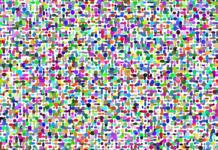Printable, a term that resonates with the convenience of modern technology and the power of replication, stands as a symbol of accessibility and versatility in the digital age. This adjective, firmly rooted in the realm of information dissemination, speaks to the seamless fusion of creativity and functionality. In a world driven by the rapid exchange of information, “printable” embodies the evolution of traditional practices into the realm of the digital, offering individuals the means to reproduce documents, designs, and resources with ease. The word itself carries a sense of empowerment, inviting users to transform intangible concepts into tangible, shareable forms.
The concept of “printable” is inherently intertwined with the advancements of technology. In an era where information flows effortlessly across the digital landscape, the term has expanded beyond its literal connotations of ink on paper. Today, “printable” encompasses a wide array of materials and mediums, from documents and graphics to templates and crafts. It is a testament to the evolution of communication, marking the transition from ink and paper to pixels and screens.
The convenience of “printable” materials lies in their accessibility. With just a few clicks, users can transform digital content into tangible forms, making information more readily available for a variety of purposes. Whether it’s a business document, an educational resource, or a piece of art, the ability to produce print-ready materials allows for seamless sharing and distribution, bridging the gap between the virtual and physical worlds.
The essence of “printable” is deeply intertwined with the democratization of knowledge and creativity. In the past, the dissemination of information was often constrained by geographical and logistical barriers. With the advent of digital technology, information can be shared globally with unprecedented speed and efficiency. “Printable” content transcends boundaries, enabling individuals from diverse backgrounds to access resources, engage in learning, and participate in a shared cultural exchange.
One of the remarkable aspects of the “printable” phenomenon is its adaptability. This adaptability extends not only to the variety of content that can be made printable but also to the ways in which users can interact with and manipulate these materials. Whether it’s adjusting the size of a graphic, customizing the layout of a document, or personalizing a template, the ability to modify “printable” content empowers users to tailor materials to their specific needs and preferences.
The educational landscape has been significantly impacted by the concept of “printable.” Educators now have the tools to create and distribute learning materials that cater to different learning styles and individual needs. “Printable” resources, ranging from worksheets and study guides to interactive activities, offer a dynamic learning experience that engages students both in and out of the classroom. This adaptability supports differentiated instruction, fostering a more inclusive and effective approach to education.
In the world of design, “printable” materials serve as a canvas for creativity. Graphic designers, artists, and creators of all kinds utilize “printable” templates to craft visually appealing content. These templates provide a foundation upon which original designs can be built, enabling individuals to explore their artistic visions and produce professional-quality materials. The versatility of “printable” design extends to various domains, from marketing collateral to personal projects.
“Printable” materials also play a pivotal role in the realm of organization and productivity. Planners, organizers, and calendars that are available in printable formats allow individuals to structure their time and tasks according to their unique schedules. This adaptability fosters a sense of agency in managing one’s responsibilities and goals. Moreover, the convenience of being able to print and use these resources as needed aligns with the fast-paced nature of modern life.
The sustainability aspect of “printable” content is noteworthy as well. As the world increasingly embraces eco-conscious practices, the ability to access and produce information digitally reduces the need for excessive printing on paper. “Printable” resources align with efforts to reduce paper waste and minimize the environmental footprint associated with traditional printing methods.
In conclusion, “printable” embodies the fusion of tradition and innovation, offering a bridge between the tangible and the digital. It reflects the evolution of communication and creativity in a rapidly changing world. From education to design, from productivity to sustainability, the concept of “printable” has transformed the way we engage with information and materials. It is a testament to the power of technology to democratize knowledge, empower creativity, and facilitate meaningful connections across global boundaries. As the digital landscape continues to evolve, “printable” remains a symbol of accessibility, adaptability, and the boundless potential of human ingenuity.
Accessibility:
“Printable” materials offer easy access to information, resources, and designs, making them readily available for a variety of purposes.
Adaptability:
The concept of “printable” is adaptable to various content types and allows users to customize and modify materials to suit their needs.
Empowerment:
“Printable” content empowers users to transform digital concepts into tangible, shareable forms, bridging the gap between virtual and physical worlds.
Educational Support:
“Printable” resources cater to different learning styles and support differentiated instruction, enhancing the educational experience for students.
Sustainability:
“Printable” materials align with eco-conscious practices by reducing the need for excessive printing on paper, contributing to environmental sustainability.
These key features provide a comprehensive understanding of the qualities and benefits associated with the concept of “printable.”
“Printable,” a term that resonates with the symphony of technology and the art of replication, paints a vivid picture of the modern era’s thirst for accessibility and adaptability. This adjective, nestled comfortably in the digital lexicon, captures the essence of transformation – the seamless conversion of intangible concepts into tangible forms. It stands as a portal between the intangible realm of ideas and the palpable world of physicality. “Printable” is a word that carries within it the potential to give form to imagination, allowing creativity to take root and flourish.
In an age where the exchange of information occurs at the speed of light, “printable” embodies the evolution of centuries-old practices. The term conjures images of ink on parchment, yet it is not constrained by the limitations of the past. Today, “printable” encompasses a wide spectrum of media, from text documents and intricate graphics to intricate craft templates. It is a testament to the progression of communication, tracing the trajectory from quills to keyboards, from paper to pixels.
The heart of “printable” beats in sync with the rhythm of technology. It reflects the metamorphosis of communication, where once-static words and images transform into dynamic entities. The concept goes beyond the mere production of printed material; it breathes life into the process, allowing information to be easily disseminated, shared, and repurposed. “Printable” content finds its home in the digital realm, an ethereal space where ideas can be archived, modified, and translated into physical reality at the whim of a click.
Printable content is a gateway to the democratization of knowledge and creativity. No longer bound by geographical constraints, “printable” materials transcend borders, reaching audiences across continents and cultures. In the realm of education, “printable” resources bridge gaps in access, enabling learners from all walks of life to engage with learning materials. This evolution of learning materials marks a shift from the scarcity of books to the abundance of online resources, leveling the playing field for seekers of knowledge.
The power of “printable” lies in its adaptability. The concept is not confined to a single medium or format; it is the embodiment of transformation. From intricate graphics that adorn a flyer to the precision of architectural blueprints, “printable” adapts to the needs of its users. The lines between amateur and professional blur as “printable” templates enable individuals to create with a level of finesse that once required specialized skills. This adaptability fosters a creative revolution where anyone with a vision can bring it to life.
The essence of “printable” is deeply intertwined with the freedom of expression. From writers crafting thought-provoking essays to artists producing visually captivating designs, the concept offers a canvas upon which creativity can flourish. For writers, “printable” documents capture the essence of thought in a tangible form, while for artists, it provides a platform to showcase their work to a global audience. This synergy between creativity and technology opens doors to new avenues of artistic exploration.
While “printable” is a digital term, its influence extends into the world of the physical. It is a bridge that connects the ethereal realm of the internet to the tangible world around us. “Printable” content acts as a conduit for ideas, enabling them to leap from the confines of screens onto the pages of textbooks, journals, and pamphlets. In a world saturated with information, “printable” becomes a tool to curate, crystallize, and commemorate that which matters most.
The educational arena has witnessed a transformation fueled by the concept of “printable.” It is not just about the convenience of producing resources; it’s about creating an ecosystem that supports dynamic and interactive learning experiences. Students are no longer passive consumers; they are active participants in their education. “Printable” worksheets, interactive activities, and multimedia-rich resources cater to diverse learning styles, making education engaging and effective.
Beyond the realm of academia, “printable” materials serve as catalysts for organization and productivity. From planners that help structure busy lives to checklists that facilitate task completion, these resources align with the fast-paced nature of modern existence. The ability to print and carry these materials fosters a sense of agency, allowing individuals to navigate life’s complexities with clarity and purpose.
“Printable” content is also a powerful vehicle for cultural exchange. It acts as a bridge connecting individuals who may never physically meet, yet share a common interest. Whether it’s a tutorial on traditional crafts, a guide to global cuisines, or a language learning resource, “printable” materials facilitate the sharing of cultural knowledge, enriching lives and fostering a global community.
In conclusion, “printable” stands as a testament to the remarkable symbiosis between technology and creativity. It embodies transformation, empowerment, and accessibility. As we navigate the intricate dance between the digital and physical worlds, “printable” offers a platform for the dissemination of ideas, the exploration of creativity, and the facilitation of education. It is a thread that weaves through the fabric of modern life, connecting us to the wealth of information and opportunities that technology affords. In the grand tapestry of progress, “printable” is a vibrant hue, reminding us that the journey from concept to reality is but a click away.






















